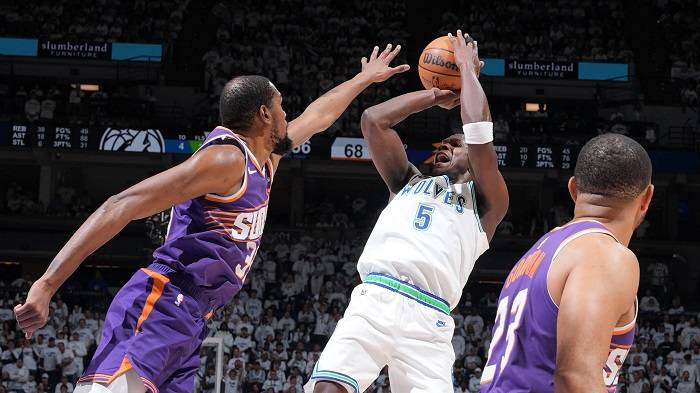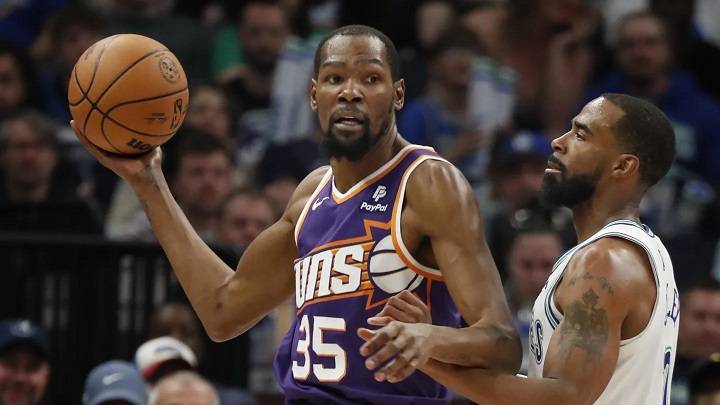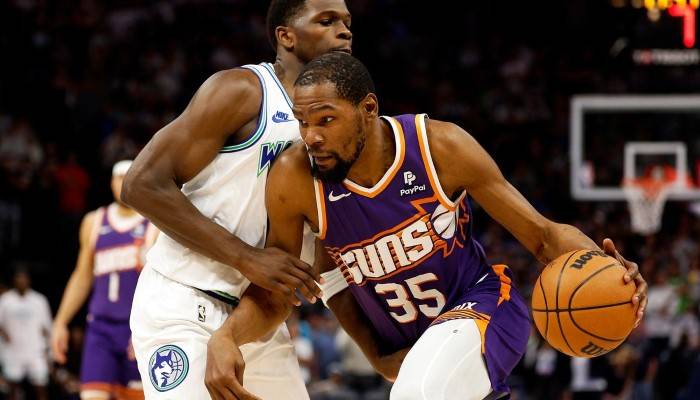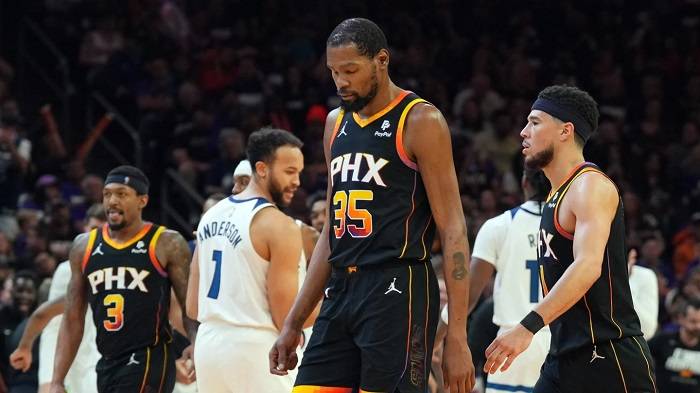The NBA consistently offers high-octane basketball action, and the recent showdown between the Phoenix Suns and the Minnesota Timberwolves did not disappoint. Both teams, featuring a mix of seasoned veterans and emerging stars, brought their A-game, resulting in a thrilling contest that kept fans on the edge of their seats. This comprehensive blog post delves into the player statistics from their latest encounter, analyzes key performances, explores team dynamics, and discusses the implications for both teams as the season progresses.
Overview of the Teams

Phoenix Suns
The Phoenix Suns, under the leadership of head coach Monty Williams, have emerged as a powerhouse in the Western Conference. Known for their fast-paced offense and robust defense, the Suns are led by All-Star guard Devin Booker and veteran point guard Chris Paul. With a deep and versatile roster, the Suns are strong contenders for the NBA title.
Minnesota Timberwolves
The Minnesota Timberwolves, guided by head coach Chris Finch, are an exciting team with a mix of young talent and experienced players. Led by superstar center Karl-Anthony Towns and dynamic guard Anthony Edwards, the Timberwolves are looking to make a significant impact in the Western Conference. Their aggressive playstyle and developing chemistry make them a team to watch.
Key Player Performances: Phoenix Suns
Devin Booker
Scoring and Efficiency
Devin Booker, the Suns’ star shooting guard, delivered a stellar performance. He scored 34 points, shooting 52% from the field and 40% from three-point range. Booker’s ability to score from anywhere on the court, whether driving to the basket or hitting perimeter shots, made him a constant threat.
Playmaking and Rebounding
Booker also contributed with 6 assists and 5 rebounds. His playmaking ability and willingness to involve his teammates were crucial in maintaining the Suns’ offensive flow. Additionally, his efforts on the boards helped secure key possessions.
Chris Paul
Scoring and Efficiency
Chris Paul, the Suns’ veteran point guard, added 18 points, shooting 48% from the field. Paul’s leadership and clutch scoring were vital in crucial moments of the game. His mid-range game and ability to navigate the defense were on full display.
Playmaking and Defense
Paul showcased his elite playmaking skills with 12 assists, orchestrating the Suns’ offense with precision. Defensively, he contributed 3 steals, demonstrating his quick hands and defensive acumen.
Deandre Ayton
Scoring and Efficiency
Deandre Ayton, the Suns’ dominant center, chipped in with 20 points, shooting 60% from the field. Ayton’s presence in the paint and his ability to finish around the rim provided the Suns with a significant advantage inside.
Rebounding and Defense
Ayton also grabbed 14 rebounds and blocked 2 shots, highlighting his importance on both ends of the floor. His rebounding secured second-chance opportunities, and his shot-blocking deterred Timberwolves’ drives to the basket.
Key Player Performances: Minnesota Timberwolves
Karl-Anthony Towns
Scoring and Efficiency
Karl-Anthony Towns, the Timberwolves’ star center, delivered an impressive performance. He scored 30 points, shooting 50% from the field and 37% from three-point range. Towns’ ability to stretch the floor and score inside made him a versatile offensive weapon.
Rebounding and Defense
Towns also contributed with 12 rebounds and 3 blocks. His presence on the boards and shot-blocking ability were critical in keeping the Timberwolves competitive throughout the game.
Anthony Edwards
Scoring and Efficiency
Anthony Edwards, the Timberwolves’ explosive guard, added 28 points, shooting 47% from the field and 35% from three-point range. Edwards’ athleticism and scoring prowess were on full display, making him a difficult matchup for the Suns’ defense.
Playmaking and Defense
Edwards also contributed with 5 assists and 4 rebounds. His playmaking helped create scoring opportunities for his teammates, while his defensive efforts included 2 steals, showcasing his two-way potential.
D’Angelo Russell
Scoring and Playmaking
D’Angelo Russell provided a significant offensive spark, scoring 22 points and shooting 45% from the field. His ability to score in isolation and from beyond the arc added another dimension to the Timberwolves’ offense. Russell also contributed 8 assists, showcasing his playmaking abilities.
Defensive Efforts
Russell contributed defensively with 1 steal, showcasing his ability to disrupt the Suns’ offensive plays. His energy and court vision were evident throughout the game.
Team Dynamics and Strategies
Phoenix Suns
Offensive Strategy
The Suns’ offensive strategy leveraged the scoring abilities of Booker and Paul. They utilized pick-and-rolls, isolation plays, and leveraged Ayton’s presence in the paint. Booker’s contributions ensured a balanced scoring attack that kept the Timberwolves’ defense on its heels.
Defensive Strategy
Defensively, the Suns focused on limiting Towns’ and Edwards’ effectiveness by using multiple defenders and strategic double-teams. They also aimed to control the defensive boards to limit the Timberwolves’ second-chance opportunities.
Minnesota Timberwolves
Offensive Strategy
The Timberwolves’ offensive strategy revolved around Towns’ inside-out game and Edwards’ dynamic scoring ability. They utilized pick-and-rolls, isolation plays, and perimeter shooting to create scoring opportunities. Russell’s contributions ensured a balanced scoring attack that kept the Suns’ defense on its heels.
Defensive Strategy
Defensively, the Timberwolves aimed to limit the impact of Booker and Paul by using physical defenders and strategic double-teams. They focused on protecting the paint and closing out on the Suns’ shooters to reduce their offensive efficiency.
Statistical Breakdown
Shooting Percentages
- Phoenix Suns: Shot 51% from the field and 39% from three-point range.
- Minnesota Timberwolves: Shot 49% from the field and 38% from three-point range.
Both teams showed efficient shooting, with the Suns having a slight edge in overall shooting percentage.
Rebounding
- Phoenix Suns: 45 total rebounds (11 offensive, 34 defensive).
- Minnesota Timberwolves: 43 total rebounds (10 offensive, 33 defensive).
The Suns’ advantage in rebounding, particularly on the defensive glass, provided them with additional scoring opportunities.
Assists
- Phoenix Suns: 28 assists.
- Minnesota Timberwolves: 25 assists.
The close assist totals reflect the effective ball movement of both teams, with the Suns having a slight edge.
Turnovers
- Phoenix Suns: 12 turnovers.
- Minnesota Timberwolves: 13 turnovers.
Both teams protected the ball well, with the Suns having a slight edge in turnover margin.
Implications for Future Games
Phoenix Suns
Strengths and Improvements
The Suns demonstrated their offensive potential with strong performances from Booker, Paul, and Ayton. However, to become more competitive, they need to improve their defensive consistency and bench production.
Key Focus Areas
- Defensive Consistency: Enhancing defensive rotations and communication to better contain high-scoring opponents like Towns and Edwards.
- Bench Production: Increasing the scoring and defensive contributions from bench players to maintain performance levels when starters rest.
Minnesota Timberwolves
Strengths and Improvements
The Timberwolves showcased their dynamic scoring trio in Towns, Edwards, and Russell, along with their defensive prowess. Maintaining consistency and addressing minor defensive lapses will be crucial as they aim to continue their winning ways.
Key Focus Areas
- Defensive Consistency: Improving their ability to limit big plays and sustain defensive pressure.
- Rebounding Balance: Enhancing their rebounding efforts to complement their dynamic offense.
Fan Reactions and Media Coverage
Suns Fans
Suns fans were encouraged by the performances of Booker, Paul, and Ayton, viewing them as the foundation for future success. The close nature of the game provided hope that the Suns can compete with top-tier opponents.
Timberwolves Fans
Timberwolves fans celebrated Towns’ and Edwards’ performances and the team’s overall resilience. The game reinforced their belief in the team’s potential to make a deep playoff run.
Media Analysis
Media analysts highlighted the standout performances of Booker and Towns, as well as the strategic adjustments made by both teams. The game was widely regarded as a thrilling showcase of talent and strategy.
Comparison to Previous Matchups
Head-to-Head Statistics
In previous matchups, both teams have shown competitive play, with Booker and Towns often leading their respective teams. Analyzing head-to-head statistics helps identify patterns and strategic adjustments made by both teams over time.
Adjustments and Trends
Comparing this game to previous encounters reveals adjustments in defensive schemes, offensive strategies, and player performances. These trends provide insights into how each team adapts to their opponent’s strengths and weaknesses.
Future Outlook for Both Teams
Phoenix Suns
The Suns’ future looks promising with Booker and Paul at the helm. Continued development of young players, strategic acquisitions, and improvement in defensive consistency will be crucial for their success. Their ability to compete against top teams like the Timberwolves demonstrates their potential to make a deep playoff run.
Minnesota Timberwolves
The Timberwolves’ future remains bright with Towns, Edwards, and Russell leading the way. Addressing areas of improvement, such as defensive consistency and bench depth, will be key. Their experienced roster and strong coaching staff position them well for continued success in the Western Conference and potential championship contention.
A Thrilling Matchup with High Stakes
The Phoenix Suns vs. Minnesota Timberwolves matchup provided basketball fans with an exciting display of talent, strategy, and competition. Key performances from players like Devin Booker, Chris Paul, Karl-Anthony Towns, and Anthony Edwards showcased the high level of skill on both teams.
Related Post:
A Comprehensive Guide to George W. Bush
For the Suns, the game highlighted their potential and areas for growth as they aim to become a consistent playoff contender. The Timberwolves demonstrated their dynamic offense and identified areas needing improvement to strengthen their playoff chances.
As both teams continue their seasons, fans can look forward to more thrilling matchups and outstanding performances. Whether you’re rooting for the Suns or the Timberwolves, the future looks bright and filled with exciting basketball.




